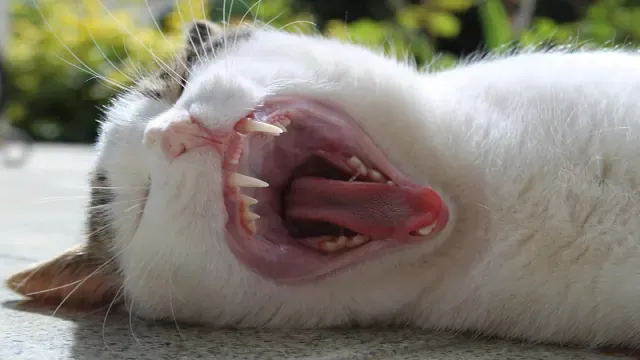Cat gingivitis is one of the 'silent' cat health care problems. Gingivitis is inflammation of the gums caused by plaque and tartar accumulation. The disease progresses slowly, so it's very easy to overlook cat gingivitis until it is advanced and the gums have receded.
At-home cleaning alone cannot fight cat gingivitis because much of the tartar lies either at or below the gum line. To be effectively controlled, a cat health care professional should periodically examine and clean the entire tooth surface while the cat is under anesthetic.
Stages of Gingivitis in cat's
Gingivitis starts out slowly, with minor inflammation of the gum line itself. If regular cleaning of the teeth is neglected, the inflammation slowly spreads deeper into the gums, attacking the tissues that support the teeth.
Advanced gingivitis can lead to loose teeth and inflamed pockets around the teeth. As the gum line recedes, the nerve roots of the teeth are exposed, leading to increased pain sensitivity when eating. Without intervention, gingivitis can even eat away at the bone underneath the teeth.
How Serious is Advanced Cat Gingivitis?
Gingivitis can lead to serious cat health care problems. At advanced stages, up to 50% of the tissues attaching the cat's teeth to its jaws can be lost. Gingivitis can cause tooth loss and great discomfort to cats suffering from its effects. Anyone who's ever suffered from exposed dental nerve endings knows how Cat Health: Gingivitis and feline dental Anatomy very painful the problem can become. There's also the very real danger that the bacteria causing the gums to deteriorate will also spread to other areas of the body.
Gingivitis symptoms in cats
Look for these symptoms:
- Shiny, rounded gum lines instead of pink, and sharply defined lines.
- Sensitivity or discomfort when eating.
- Pain when drinking cold water.
- Loose teeth.
- Discomfort during tooth cleaning.
- Bad breath.
Prevention: Regular Dental Cleaning
Brushing is the first line of defense against gingivitis, and is quite effective against the early stages. To effectively control gingivitis, however, a professional tooth cleaning is required. With the cat under anesthetic, the vet can clean the tartar that hides beneath the gum line.


